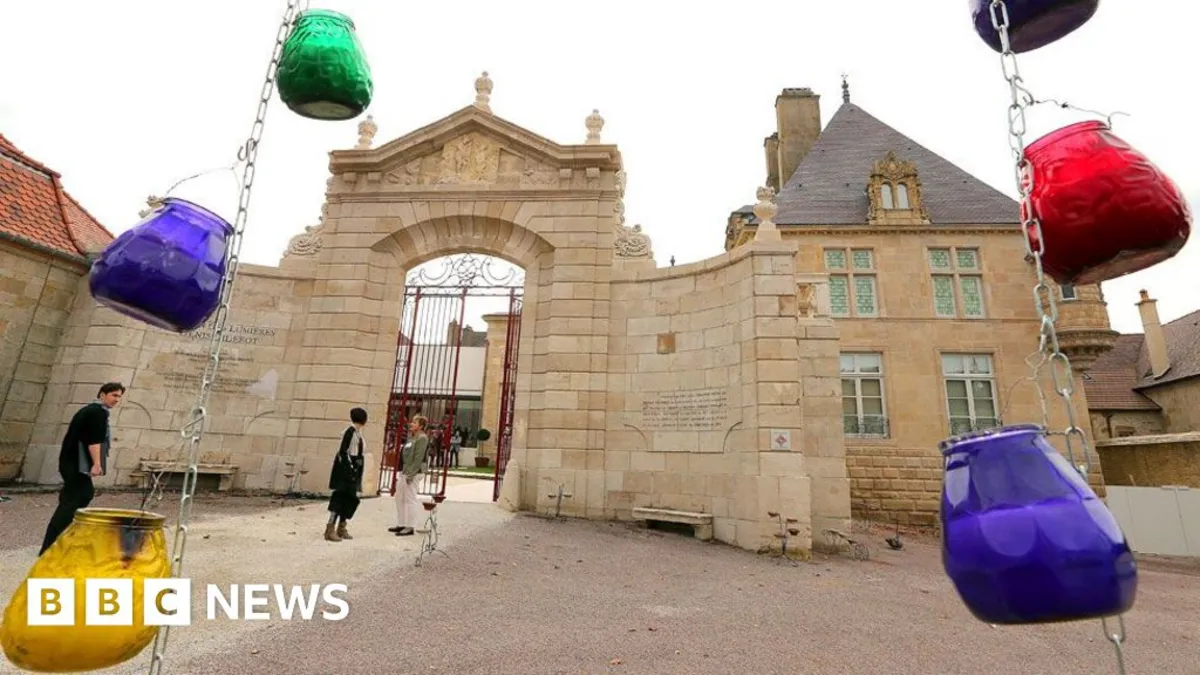
In a shocking incident, around 2,000 gold and silver coins valued at approximately €90,000 (£78,000; $104,000) were stolen during a raid at a French museum. This theft occurred just hours after the audacious robbery of some of the French crown jewels at the Louvre in Paris. The incident took place at the Maison des Lumières (House of Enlightenment) in Landres, northeastern France, on Sunday night.
When the museum reopened on Tuesday, employees discovered a smashed display case and immediately raised the alarm. According to local authorities, the coins were taken with considerable expertise, highlighting the calculated nature of the theft. This latest incident adds to a disturbing trend of thefts at cultural institutions across France.
The stolen coins date back to between 1790 and 1840 and are part of the city's private collection. These valuable artifacts were unearthed during renovation work in 2011 at the building that now houses the museum, as reported by local media.
This museum heist follows a series of high-profile thefts in France. Just last month, thieves broke into the Natural History Museum in Paris, stealing six gold nuggets worth around €1.5 million. A Chinese national was arrested in Barcelona in connection with this crime while attempting to sell some melted-down gold, according to prosecutors. She is currently held in pre-trial detention.
In another incident in September, thieves stole two Chinese porcelain dishes and a vase valued at a combined €6.55 million from the national porcelain museum in Limoges. These items remain missing, and no arrests have been made, with experts noting that their traceable nature makes them difficult to sell on the art market.
The most notorious of these thefts was the brazen daylight robbery at the Louvre, where approximately €88 million worth of historic jewelry was stolen. A gang disguised as museum workers used power tools and a mechanical ladder to access the first-floor Gallery of Apollo shortly after the museum opened. Among the stolen items were a diamond and emerald necklace given to Empress Josephine by Napoleon and several pieces owned by Queen Marie-Amelie.
Following these incidents, concerns regarding the security of cultural institutions in France have reached a fever pitch. Art detective Arthur Brand warned that museums across Europe could face a wave of copycat raids. "If someone can target the Louvre and escape with the French crown jewels, local thieves may think, 'let's try our nearest museum,'" he stated, emphasizing the vulnerability of museums compared to heavily secured jewelry stores.
In a recent address, Louvre director Laurence des Cars mentioned that the museum's perimeter CCTV was outdated and ineffective. She revealed that the only camera monitoring the area where the thieves broke in was misaligned, failing to capture the critical moments of the heist. "We failed these jewels," des Cars lamented, recognizing that no institution, not even the Louvre, is safe from criminal acts.
Justice Minister Gérald Darmanin expressed his concerns about the failed security protocols, noting that the ability of the thieves to drive a modified truck up to the museum has tarnished France's reputation. In the case of the gold stolen from the Natural History Museum, it was revealed that the building's alarm and surveillance systems had been disabled due to a cyber-attack, suggesting that the thieves were well-informed about the vulnerabilities of the institution.
As these incidents unfold, the need for enhanced security measures at cultural institutions across France has never been more pressing. The recent robberies serve as a stark reminder of the vulnerabilities inherent in preserving and protecting national heritage.